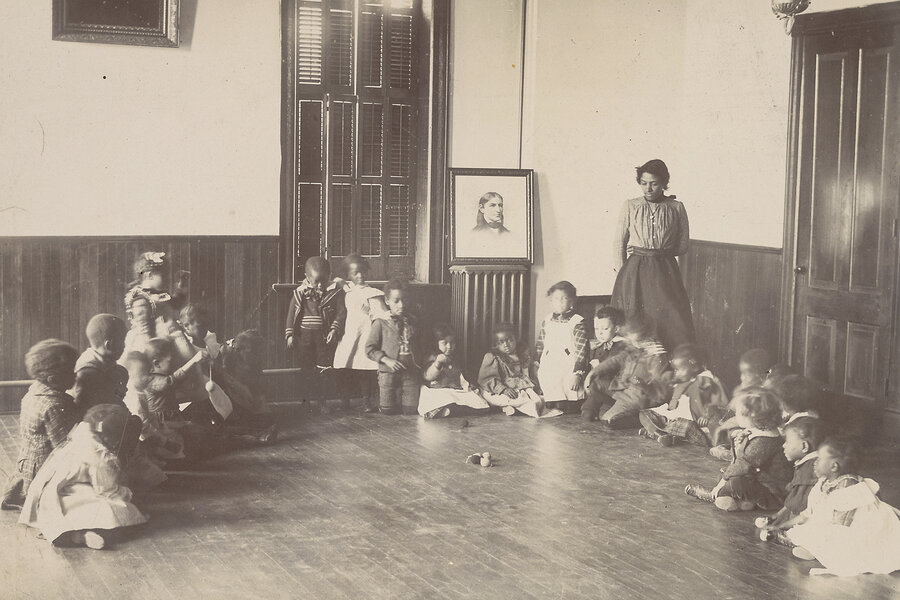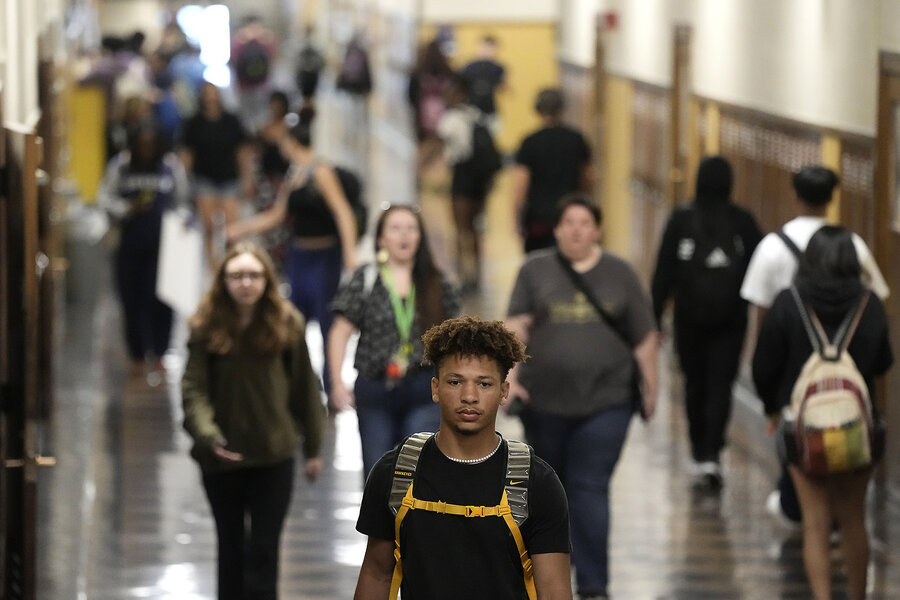Brown v. Board of Education at 70: Promise for students, but still work to be done
Loading...
I was four years into my tenure at a Black-owned newspaper when the city of Augusta, Georgia, voted to lift a decades-old desegregation order back in 2013.
I was skeptical of the move because the promise of progressivism in education had not been fulfilled, evidenced by middling test scores and a literal erasure of the city’s Black educational past.
Why We Wrote This
A story focused onOn the 70th anniversary of the Brown v. Board of Education decision, our commentator weighs the promise that decision still offers for students against the realities of what their schools look like today.
I feel a similar ambivalence on the 70th anniversary of the Brown v. Board of Education decision from the U.S. Supreme Court that presumably made integration the law of the land. At once, there’s the promise of equity in education for students, regardless of race or economic background. On the other hand, there are the realities of resegregation, which paint a far more grim picture.
American society is largely removed from the staunch physical violence of the Civil Rights Movement, but segregationist attitudes and policies are having an overt effect on schools once more. An April report from the Civil Rights Project at the University of California, Los Angeles, offers a snapshot of the current environment: The proportion of intensely segregated schools rose to 20%, nearly tripling over the past 30 years.
I was four years into my tenure at a Black-owned newspaper when the city of Augusta, Georgia, voted to lift a decades-old desegregation order back in 2013. I was skeptical of the move because the promise of progressivism in education had not been fulfilled, evidenced by middling test scores and a literal erasure of the city’s Black educational past.
Less than a month after the order was lifted, the school system in Augusta acknowledged plans to tear down the Cauley-Wheeler building, a hallowed and historical structure on the campus of Lucy Craft Laney High School. The house was the last remaining structure from the Haines Normal and Industrial Institute, which Ms. Laney founded in 1886 to educate Black children. There were various times of the year that I would take photos of events on Laney Walker Boulevard, with alumni and enthusiasts in attendance, but when it came to saving a piece of history, one could hear a pin drop in comparison.
I feel a similar ambivalence on the 70th anniversary of the Brown v. Board of Education decision from the U.S. Supreme Court that presumably made integration the law of the land. There’s the promise of equity in education for students, regardless of race or economic background. On the other hand, there are the realities of resegregation, which paint a far more grim picture.
Why We Wrote This
A story focused onOn the 70th anniversary of the Brown v. Board of Education decision, our commentator weighs the promise that decision still offers for students against the realities of what their schools look like today.
American society is largely removed from the staunch physical violence of the Civil Rights Movement, but segregationist attitudes and policies are having an overt effect on schools once more. An April report from the Civil Rights Project at the University of California, Los Angeles, offers a snapshot of the current environment: The proportion of intensely segregated schools rose to 20%, nearly tripling over the past 30 years.
Robert Greene II, a history professor at Claflin University, a historically Black university in Orangeburg, South Carolina, says the legacy of Brown is “that of continued promise.” But, there’s more to it than that.
“Memorializing Brown v. Board, while also acknowledging the work that remains to be done in education, is critical if we’re going to see positive change in our society,” Dr. Greene writes in an online interview. “Already, there are far too many prominent leaders calling for a retreat from the ideals of Brown v. Board. Part of why we need to keep this alive is to make sure that the legacy becomes real, substantial reform in education.”
In terms of the Black experience, reform was far more revolutionary and hard-fought. While Topeka, Kansas, provided the backdrop for the Brown showdown, dreams of equity in education took root in Clarendon County, South Carolina, in the 1940s. It started with a handful of Black families who aspired to send their kids to school, but the county only bused white children.
Levi Pearson was the first to board up his truck to transport children to and from school, but that only scratched the surface of the injustice they experienced, according to author Claudia Smith Brinson, who writes: “South Carolina spent $221 annually for each white student, $45 for each Black student. The schools serving 2,296 white children in Clarendon County were worth $390,600; the schools serving 6,081 Black children were worth $64,285.”
“Separate but equal,” the law insisted. This put the Pearsons in contact with legendary future Supreme Court justice Thurgood Marshall, who was the NAACP’s special counsel at the time. He filed a suit on the Pearsons’ behalf, but it was dismissed. The Pearsons’ white neighbors were violent, but Levi often said that “I believe God wants me to do it. God wants me to make the sacrifices.”
There’s a direct lineage between the champions of Clarendon County and today’s efforts to teach a history that is under siege by local and state governments. Dr. Greene is the lead instructor at the Modjeska Simkins School, which is named for a pioneering educator and activist who helped write the declaration of equality for the lawsuit that called for equal access in Clarendon County.
History knows much about Justice Marshall, whose call to desegregate schools “with all deliberate speed” rings in history books and educational lore. Heroes such as Ms. Simkins, Rev. Joseph DeLaine, and Harry and Eliza Briggs are not as well known. Mr. Briggs was the lead plaintiff of Briggs v. Elliott, the first of five cases that laid the groundwork for Brown.
Amidst this milestone celebration of Brown v. Board, we should do a better job of not just appreciating the everyday people who made the movement, we should also be mindful of the finer details in education. That goes beyond the noise of pitting public and private schools against each other, or incessant and ahistorical railings about critical race theory. For years, people have expressed concerns about a “literacy crisis” in education. Perhaps it’s a challenge of malnutrition; specifically, students who arrive at school unfed. Which again puts economic disparities under rightful scrutiny.
Less than five minutes from the Board of Education building in Augusta there’s a cyber center named after a former governor that has garnered praise for being a forward-thinking effort. There’s a historical marker in front of the parking deck that is not as celebrated – a recognition of Ware High School, which opened in 1880 as the first African American high school in Georgia. The school was closed for financial reasons after the Plessy v. Ferguson decision in 1897, which argued the “separate but equal” ideology that enforced legal segregation.
I ride by that marker twice a week, and when I do, I flash back to the Cauley-Wheeler building, to homecoming parades, to all of the joys and sufferings that make up the constitution of education. And out of the name “Ware,” I am mindful to be aware of what’s going on in education and civics in general. I understand now that living documents alone aren’t enough to preserve the civil rights legacy. Those of us who are living must do our part as well.










